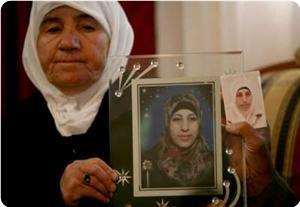Category: In the Media
-
Arrests and nonviolent actions in South Hebron Hills
26 February 2012 | Operation Dove On February 25th Palestinian men and women, elders and children, together with Israeli and international activists gathered for two demonstrations organized by the South Hebron Hills Popular Committee. The first demonstration, attended by approximately ninety people, was planned in response to twenty-nine trees being cut down during the last four months on…
-
Soldiers Invade Al-Boreij Refugee Camp in central Gaza
by Saeed Bannoura 25 February 2012 | International Middle East Media Center Israeli soldiers invaded, on Friday evening, an area east of the Al-Boreij Refugee Camp, in central Gaza, firing dozens of rounds of live ammunition, while military choppers flew overhead firing flares. The motives of the invasion remain unknown as the soldiers just searched…
-
Palestinian female detainee Hana’a Shalabi on tenth day of hunger strike
25 February 2012 | Palestine Information Center Detained young woman Hana’a Shalabi has entered her tenth day of hunger strike protesting her administrative detention despite being released late last year in the prisoners’ exchange deal between Hamas and Israel. Attallah Abulsabh, the minister of prisoners in the Haneyya government, said that Hana’a, 28, is the…

